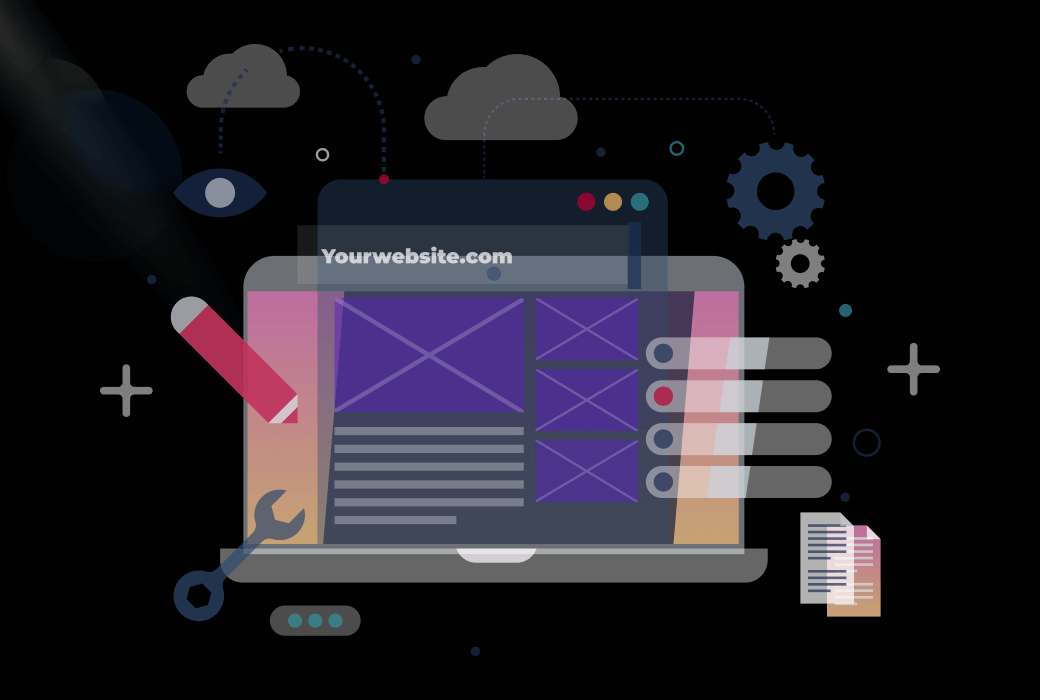Building a website is not simply about having a good idea in your head or having a few coding skills. It involves knowing how everything fits together. Do you realize what the components of a well-constructed website are?
When you hear the word “anatomy,” it may sound odd, especially for those who are new to developing websites. However, if this notion is broken into smaller parts, the chances of learning to design, develop, and even run a good website for certain purposes will be increased.
In this guide, we are going to dissect the anatomy of a website, including key components, design elements, and technical aspects. Whether you’re creating a simple personal profile website or beginning with a website for your small business, being familiar with these basic elements is very important to ensure that there is a digital structure. Therefore, let us get into the topic and find out how this website works!
What is the Anatomy of a Website?
All those elements contributing to the functionality and outlook of the website constitute the anatomy of a website. This includes layout, design, content, or technical specifications. Web developers and designers need to have a basic understanding of the ‘anatomy of a website’ as it helps in ensuring that the different components of the website interact and achieve the desired purpose of a good user experience.
What blocks make up the anatomy of a website?
The essential blocks that make up the anatomy of a website are;
- Header
- Navigation
- Main content area
- Sidebar
- Footer
These blocks work together to ensure a functional user experience.
Components of the Anatomy of a Website
The anatomy of a website consists of several primary components that provide functionality, interactivity, and seamless user experience. Here are the main components.
1. Header:
A website heading or header is the topmost part of the page that is visible even on the other pages of a website. It normally consists of a few important components like the logo and the navigation menu. The header plays a major role in the site’s branding and also helps in finding the main sections of the site easily.
- Brand/Logo: This refers to the symbol, image, or graphics representing a business or brand, which is often hyperlinked and directed back to the home page.
- Navigation Menu: These are a number of links forming a chain that directs the user to other sections or pages of the site.
- Call to Action (CTAs): These are the links and buttons that provoke users to take immediate steps, such as registration or customer support, in case of any issues.
2. Hero Section:
After the header, the next section that is usually found is the hero section. In most cases, it is a big, eye-catching section with a head tag and some form of pictorial representation or a video. Its purpose is generally to show off the best picture and help one focus on a particular idea or offering the website wants to promote. A hero section with a lot of creativity can help stir up feelings, create an itch for more information, and motivate a visitor to turn into an active user.
3. Main Content Area:
This is the body part of a webpage where the main information is depicted. It is the largest segment meant to grab the attention of the user, having either text or images or any other kind of multimedia.
- Text Content: The written content about the information, which can include the blog posting and a description of products or services.
- Images/Videos: Visual elements that help better understand the content, making it more appealing.
- Call-outs: Outlines that draw attention to areas with a lot of information to pay attention to, such as promotions, benefits, or reviews.
- Forms: Areas that provide an option to fill in certain information (e.g., registration or contact page).
4. Sidebar:
The sidebar is an additional vertical arrangement, commonly found either to the left or right of the main body of the content. It mainly offers supplementary ways of navigation, some ads, or even other content such as the latest posts, various categories, and social media links. For example, a search bar could be added to the sidebar for navigation into content, while it could also include popular articles to keep people interested in revisiting a website.
5. Footer:
The footer is at the bottom of each page and often carries relevant subsidiary content. It is commonly used for links to policies, contact information, and social media.
- Links: Commonly on Privacy Policy, Terms of Service, FAQs, and even navigation pages.
- Contact Information: This enables users to contact them through email, a telephone number, or an address.
- Social Media Icons: Access other quick links on the company’s social media pages.
6. Call to Action (CTAs):
CTAs refer to calls-to-action links or buttons on websites intended to trigger a user to take an action that may include subscribing, buying, learning more, etc. They are placed in a very purposeful position all over the site to lead the user’s action.
7. User Interface (UI) Components:
These include the buttons, forms, icons, and other items within the website that help users navigate it. A good UI design element enhances the user experience by making navigation across the site easy and more intuitive.
- Buttons: An interactive feature enabling one to carry out actions like submitting a form or adding items to the cart
- Sliders/ carousels: Interactive sections in which pictures or review content can be represented in a sliding format.
- Icons: Symbols that make the system user-friendly and represent functionalities like links for searching, social media sites, etc.
8. Search Functionality:
A search bar can be used by visitors to find information on the website by typing in some keywords relevant to a piece of content that they are looking for and thus quickly finding what they are searching for, which is helpful, especially for content-driven websites.
9. Blog/News Section:
A regularly updated area where articles, news, or blog posts are published. This helps drive user engagement and traffic and improves SEO (search engine optimization).
10. Back-End Components:
The back end is anything that helps this website work but stays out of view from the viewer. In other words, it can include the server, database, and all processing systems that process user requests.
- Database: This is the core where all information about the website, including the user’s account, posts, and products, will be stored.
- Server: Computer hosting the website whose pages are served to users.
- Content Management System (CMS): A system enabling a site owner to add, modify, or manage content without having to code (e.g., WordPress).
Design Elements in the Anatomy of a Website
Components like design elements play crucial roles in defining the structure of a site. The following are major design principles to bear in mind:
Visual Hierarchy:
This aids in helping the user find their way around the site more easily. Use titles, pictures, and white spaces to direct users’ focus onto important information. A distinct visual hierarchy is one of the basic components that make up the anatomy of a website.
Color Scheme:
The colors selected on a given website have an impact on the users. Designing an interesting and consistent color scheme contributes to the aesthetic appeal of the physical structure of a website.
Typography:
The use of readable fonts is a must. Consider good type and font selections for a better user experience since the visitors will have to consume the content. The selection of different types of fonts is very important in the structure of a web page.
Technical Aspects of the Anatomy of a Website
The technical aspects would be equally important in the anatomy of a website. Key points here include:
Responsive Design:
Most users access websites using mobile devices, so responsive design is a requirement. The website’s layout should change according to the size of any screen. This makes the design of a whole website more complex, such that interactions are justifiably warranted to take place across the many possibilities in terms of devices.
Loading Speed:
The site must also load extremely fast to retain visitors. Its anatomy should include well-optimized images and clean code for speedy ones.
SEO Elements:
Why is it so important to be visible? A website’s anatomy contains meta tags, alt text, and keyword optimization to rank high with search engines.
Tips for Evaluating and Improving the Anatomy of a Website
Consistently Assessment of Designing Components: Make sure the visual looks new and attractive. Having routine adjustments can help keep the structure of a website current.
Test Navigation: It should ensure that users can find information quickly. User testing may help diagnose problems in the navigation part of the anatomy of a website.
Enhance Content: Update only a small amount of content at any given time. It is important to add content regularly and, in particular, in the main content area to maintain the users’ interest and improve the anatomy of a website.
Analyze Performance: Use necessary tools to check the loading speed and user engagement. The anatomy of a website would then be monitored, and technical aspects that need to be improved could also be pointed out.
Final Thoughts
No matter what role you play in developing or designing a webpage, the components that make up a webpage are quite important. However, by looking at the anatomy of a website in terms of its critical components, design elements, and technical aspects, you can provide a better user experience.
People have to change and adapt as they grow older, and so do the graphics and design tendencies or the target audience’s attitude toward the website. So, whether you are creating a brand new website or refurbishing an old one, do not forget the structure of the website—its parts and role in the project’s success.
VisionX’s web development service improves the anatomy of a website by creating custom, user-centered designs that are up to par with industry rates and focus on achieving quantifiable results for the business. Their tailored solutions will guarantee a unique online presence that is technically optimized for strong performance and engagement.


